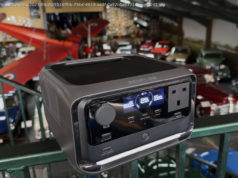You’ve almost certainly heard of the ‘farm to fork’ movement, but what about ‘lab to table’? Welcome to the world of lab-grown meat: the fast-evolving dream of bringing customers their favorite edible dead animal without actually having to kill any animals in the process.
This article is part of Troubleshooting Earth: a multi-part series that explores the bold, innovative, and potentially world-changing efforts to wield technology as a weapon against climate change.
If you’re a foodie with their ear to the ground, you’ve almost certainly heard of the “farm to fork” movement, designed to promote the serving of fresh, locally sourced produce. But how about lab to table?
Sure, it’s a bit less catchy, but it’s also what many believe to be the future: the mass production of lab-grown meat which requires the killing of zero animals before it lands on your grill. It’s not just something that appeals to animal lovers, either. Lab-grown meat could, its proponents suggest, help the environment, while also producing significantly less food waste in the process.
In the past decade, the dream of lab-grown meat has shifted from science fiction to science fact. In doing so, it has sparked the creation of dozens of companies, and support from some of the biggest names on the planet. But is it truly the way of the future? Digital Trends took an extended look.
You can thank Winston Churchill. Well, kind of. Back in 1931, before he was British Prime Minister, the famous wartime leader took a turn at culinary prognostication. Within 50 years, he suggested, it would be possible to “escape the absurdity of growing a whole chicken in order to eat the breast or wing.” This could be achieved by growing individual parts separately “under a suitable medium.”
Churchill was right. While lab-grown chicken is still far from mainstream, the idea has gained significant momentum in the years since then. A little over a decade ago, in 2008, PETA offered a $1 million prize to the first company that could bring lab-grown chicken meat to market. The prize money coincided with dozens of laboratories around the world taking on the challenge of cultured meat.
A few years later, in 2013, a Dutch pharmacologist and Professor of Vascular Physiology at the Netherlands’ Maastricht University, unveiled the world’s first lab-grown burger. Its game-changing “clean meat” was produced using animal cells, but without the requirement of, you know, killing an actual animal as the food source. For many people, this was the first time that they heard about lab-grown meat. Like the PETA announcement, it sparked a wave of interest from entrepreneurs and venture capitalists.
“When I presented the first cultured hamburger, I wasn’t aware of anyone working on cultured meat,” Post told Digital Trends. “Now, there are over 30 companies working on commercializing this technology. The big meat companies like Tyson, Cargill and Bell Food Group have invested, as well as famous investors like Sergey Brin, Bill Gates, and Richard Branson.”
Today, Post is chief scientific officer for Mosa Meat, one of the leading startups working in lab-grown meat. There’s also the San Francisco-based Memphis Meats, Israel’s Future Meat Technologies, and many others. All have their own twists on the concept, although the broad strokes remain the same.
“[Our process involves] obtaining a small number of animal cells from high-quality livestock animals,” David Kay, senior manager of communications and operations for Memphis Meats, told us.
Домой
United States
USA — software Burgers are just the beginning: Embracing the future of lab-grown everything






